Are you considering updating your flooring? Whether you’re renovating your home, refreshing your space, or simply looking for ways to improve comfort and aesthetics, now is the perfect time to explore the latest trends and innovative solutions in flooring. From modern designs to timeless classics, updating your flooring options can transform your space into something truly special. With a focus on affordability, durability, and style, this guide will walk you through the best practices, top materials, and smart strategies to achieve a flooring upgrade that aligns with your unique taste and lifestyle. Let’s dive into the world of modern flooring ideas, budget-friendly options, and future-forward trends that promise to elevate your space for years to come.
Key Takeaways
- Timeless Flooring Choices: Opt for durable and aesthetically pleasing options like hardwood, bamboo, engineered wood, tile, and vinyl to ensure your flooring stands the test of time.
- Design-Forward Trends: Incorporate minimalist and maximalist styles, neutral tones, geometric patterns, and multi-textured surfaces to create a sophisticated and adaptable space.
- Most Timeless Options: Choose hardwood for its natural beauty, ceramic/stone tiles for durability, vinyl for affordability and moisture resistance, bamboo for eco-friendliness, and carpet for warmth and comfort.
- Modern Trends in 2025: Embrace luxury vinyl tiles, engineered hardwood, eco-friendly carpet, smart flooring technology, modular solutions, and area rugs to stay ahead of design curves.
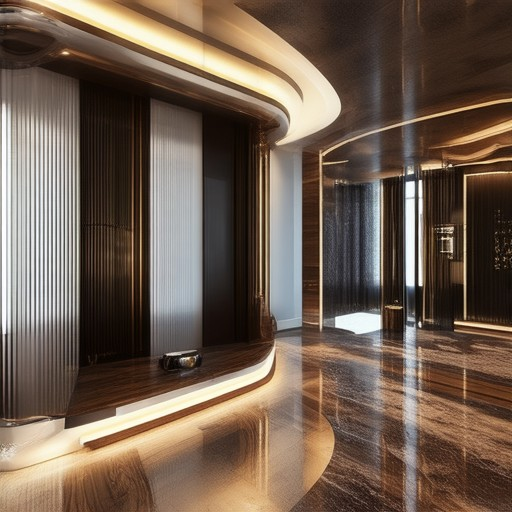
What is the Newest Trend in Flooring?
The world of flooring is constantly evolving, driven by innovation, sustainability, and aesthetic preferences. As we move into 2025, several exciting trends are emerging that promise to redefine how we think about and choose flooring solutions.
- Biomimetic Design: Inspired by nature, flooring patterns and textures are becoming increasingly intricate, mimicking organic surfaces like tree bark, rock formations, and abstract floral motifs. This trend emphasizes harmony with the environment and adds a unique visual appeal to spaces.
- Sustainable Materials: Eco-consciousness is driving the adoption of renewable resources. Bamboo, cork, and recycled wood are gaining popularity due to their low environmental impact. These materials not only reduce carbon footprints but also contribute to a healthier indoor environment.
- Large Format Tiles: Oversized tiles continue to dominate modern interiors, offering a minimalist and expansive feel. Their durability and ease of maintenance make them ideal for high-traffic areas, while their aesthetic appeal suits contemporary design schemes.
- Hybrid Flooring Solutions: Combining the best of traditional and modern materials, hybrid flooring options like vinyl plank and engineered hardwood offer versatility and resilience. They are perfect for families and pet owners who need tough yet beautiful floors.
- Colorful Patterns and Bold Statements: Bright, vibrant hues are making waves in flooring, particularly in urban lofts and young professional homes. Checkerboard patterns, geometric designs, and bold monochromatic looks are redefining floor design creativity.
These trends reflect a shift towards personalization, environmental responsibility, and timeless elegance. Whether you’re renovating a home or simply updating a room, considering these flooring innovations can elevate your space to new heights.
For more insights and to explore these trends further, visit our flooring ideas section. We provide detailed guides, expert tips, and curated collections to help you make informed decisions for your home.
How to Transition Different Levels of Flooring
Transiting between different flooring levels requires careful planning and execution to ensure a smooth and safe transition. Here are some effective methods:
- Reducer Strips: Ideal for transitioning between two flooring types with different heights, reducer strips gently slope from the higher floor to the lower one, creating a seamless transition. They are commonly used when moving from hardwood to carpet or tile.
- Threshold Plates: These are metal plates that sit on the lower floor and feature a raised lip to hold the upper floor material in place. They are durable and suitable for high-traffic areas like between tile and wood floors.
- Stair Nosing: Used primarily at the base of stairs, stair nosing covers gaps and provides a decorative and safe transition between different flooring levels. They come in various materials to match your decor.
- Grout Lines: For tile transitions, applying extra grout along the edge of the upper floor can create a visually seamless transition. This method is cost-effective and works well with tile surfaces.
- Rubber Transition Strips: A popular choice for carpet transitions, rubber strips are flexible, affordable, and easy to install. They can be cut to fit under doors and provide a smooth transition between hard and soft flooring.
- Adhesive-Backed Vinyl Transitions: These are self-adhesive strips that offer a variety of designs and colors. They are easy to apply and provide a stylish transition between different flooring materials.
When choosing a method, consider factors like cost, durability, and ease of installation. For professional advice, visit our flooring guide at Peck and Gartner .
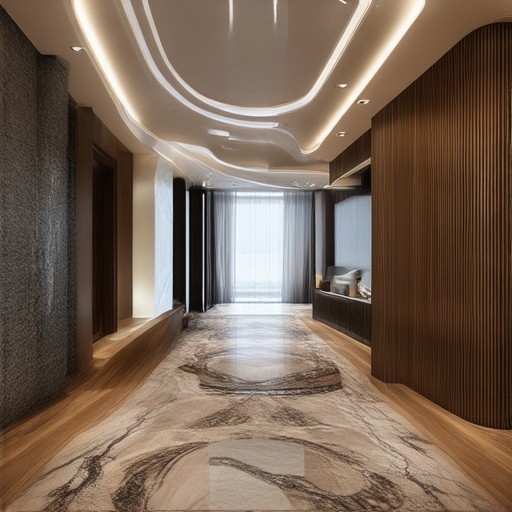
What is the Cheapest Way to Redo Flooring?
Redecorating your flooring can significantly refresh your home’s appearance without breaking the bank. Here are some cost-effective options to consider:
1. Vinyl Flooring
- Affordability : Vinyl is one of the most budget-friendly flooring options, often costing less than $2 per square foot for basic options.
- Installation : Peel-and-stick vinyl planks are easy to install yourself, saving on labor costs. Look for options that match your decor.
- Durability : While vinyl is lightweight and easy to clean, it may not be the most durable option for high-traffic areas. Consider scratch-resistant coatings for longer-lasting wear.
2. Laminate Flooring
- Cost-Effectiveness : Laminate is another budget-friendly choice, typically priced between $2 to $5 per square foot.
- Realism : High-quality laminates can mimic the look of real wood or stone, offering a stylish upgrade without the expense.
- Installation Tips : Floating laminate systems are a good option for DIYers, though ensure your subfloor is stable.
3. Tile or Stone Flooring
- Budget Considerations : Tile can vary widely in price, from $0.50 to $10 per square foot depending on material and finish.
- Installation Challenges : Heavy and time-consuming to install, but small-format tiles and grout-less designs can lower costs.
- Low Maintenance : Tiles are easy to clean and resistant to stains, making them a good long-term investment.
4. Cork Flooring
- Affordability : Cork is generally more expensive than vinyl or laminate, around $3 to $8 per square foot.
- Benefits : Soft underfoot, soundproof, and eco-friendly, making it a great choice for bedrooms or living areas.
- Installation : Easy to install with click-and-lock systems, though precise cutting is needed for a seamless look.
5. Bamboo Flooring
- Cost-Efficiency : Bamboo is moderately priced, ranging from $3 to $8 per square foot, depending on quality and finish.
- Sustainability : A renewable resource, bamboo is an excellent eco-friendly option.
- Installation Requirements : Requires special tools and techniques, so ensure you hire an experienced installer or use a floating system.
6. DIY Options
- Self-Adhesive Vinyl Tiles : Perfect for quick updates, these tiles can be laid in a day and are reversible for a fresh look.
- Painted Concrete Floors : Transform plain concrete with epoxy paint for a polished, industrial aesthetic. Ensure proper preparation for adhesion.
Key Considerations:
- Subfloor Preparation : Essential for all flooring types to ensure stability and longevity.
- Installation Difficulty : Choose options that align with your skills, whether DIY or hiring professionals.
- Longevity : Invest in materials that can withstand daily wear, especially in high-traffic areas.
For more detailed guides on each flooring type, explore our Flooring Installation Guides and discover the perfect solution for your home.
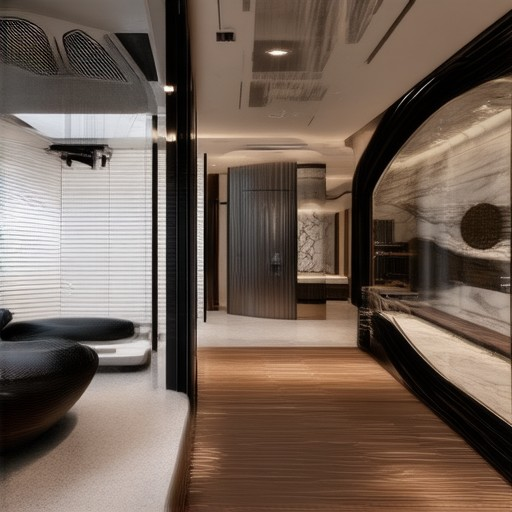
Timeless Flooring Choices
When selecting flooring that won’t go out of style, consider these enduring options:
- Hardwood Flooring : Classic and versatile, hardwood floors remain popular due to their durability and timeless aesthetic. Opt for rich, earthy tones like walnut or espresso for a sophisticated look.
- Bamboo Flooring : Known for its eco-friendliness and versatility, bamboo offers a modern yet natural vibe that complements various interior designs.
- Engineered Wood Flooring : A great alternative to traditional hardwood, engineered wood is more resistant to moisture and dents, making it ideal for high-traffic areas.
- Cork Flooring : Soft, sustainable, and soundproof, cork adds a unique charm to any room while remaining stylish and practical.
- Tile and Stone Flooring : Durable and elegant, tile and stone are excellent for kitchens, bathrooms, and basements. They also come in a variety of colors and textures to suit any decor.
- Vinyl Flooring : Affordable and waterproof, vinyl is a great choice for families with pets or children. It mimics the look of natural wood or stone without the maintenance.
- Concrete Flooring : Trendy and contemporary, concrete floors offer a sleek, industrial aesthetic that can be polished to a high gloss or left raw for a rustic feel.
Design Trends to Consider
To keep your flooring choice looking fresh, incorporate these design trends:
- Minimalist and Maximalist Styles : Both approaches can work with the right flooring. Minimalist spaces often favor monochromatic palettes, while maximalist designs thrive on texture and pattern.
- Neutral Tones : Stick with beige, cream, or light gray tones for a timeless look that pairs well with any decor.
- Geometric Patterns and Textures : Add visual interest with flooring that features subtle geometric patterns or textured surfaces.
- Multi-Textured Surfaces : Combine different textures within a room for a layered effect that enhances the overall design.
- Larger Plank Sizes : Larger planks create a sense of spaciousness and are easier to clean, making them a practical and stylish choice.
By choosing flooring that aligns with these trends and timeless styles, you can ensure your home remains beautiful and relevant for years to come. For more tips on selecting the perfect flooring, visit our flooring guide .
What Flooring is Most Timeless?
The perfect flooring choice is one that withstands trends and remains stylish for decades. Here are some of the most timeless flooring options:
- Hardwood : Known for its natural beauty and durability, hardwood flooring has been a staple in homes for centuries. Its versatility allows it to complement almost any decor, from traditional to modern styles, and it can be refinished over time to suit changing tastes.
- Ceramic and Stone Tiles : These flooring options are not only timeless but also incredibly durable. Available in a variety of colors and patterns, they offer a sleek, elegant look that never goes out of fashion. Their resistance to moisture makes them ideal for high-moisture areas like bathrooms and kitchens.
- Vinyl Flooring : Vinyl has been a popular flooring choice for years due to its affordability and ease of installation. It’s also highly resistant to water, making it a great option for busy households. Plus, it can be designed to look like real wood or stone, adding to its timeless appeal.
- Bamboo Flooring : Bamboo is an eco-friendly alternative that’s quickly gaining popularity. Its natural aesthetic and durability make it a great choice for those seeking a more sustainable option. It’s also easy to maintain and can last for many years.
- Carpet : While it may require more maintenance, carpet remains a timeless choice for comfort and warmth. Its soft texture adds a cozy feel to any room, making it a favorite for families.
Each of these flooring options offers unique benefits, ensuring they remain relevant and desirable for years to come. Whether you prefer the natural look of hardwood or the sleek elegance of ceramic tiles, there’s a flooring solution that fits your lifestyle and home decor perfectly.
Explore more flooring ideas and tips by visiting Peck and Gartner .
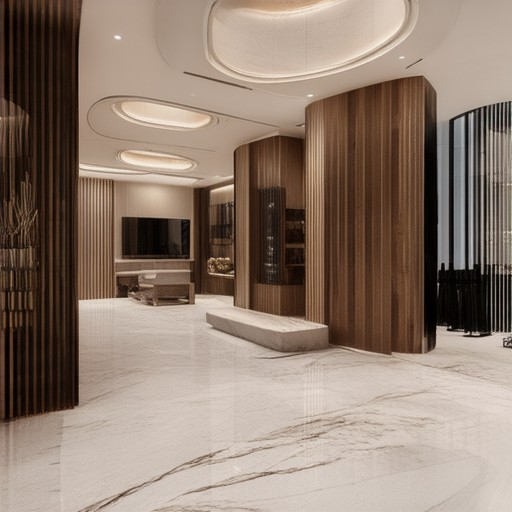
Modern Flooring Trends in 2025
The flooring industry in 2025 is experiencing significant shifts, driven by evolving consumer preferences, technological advancements, and environmental consciousness. Here are the key trends shaping modern flooring:
- Luxury Vinyl Tiles (LVTs):** These tiles continue to dominate due to their ease of installation, versatility, and wide range of styles. LVTs are perfect for mimicking natural surfaces like wood and stone, making them a favorite among homeowners seeking a sophisticated look.
- Laminate Flooring:** Improved laminate flooring options are gaining traction, offering more realistic textures and enhanced durability. Their resistance to wear and tear makes them ideal for high-traffic areas, making them a practical choice for families.
- Engineered Hardwood Floors:** As concerns about environmental impact grow, engineered hardwood floors are becoming increasingly popular. They are more stable and resistant to moisture, making them a sustainable alternative to traditional hardwood.
- Eco-Friendly Carpeting:** With a growing emphasis on sustainability, carpets made from recycled materials or biodegradable fibers are rising in popularity. These options appeal to environmentally conscious homeowners seeking soft, warm flooring solutions.
- Area Rugs:** Customizable and versatile, area rugs are enjoying a resurgence. They provide a cozy touch and can be easily changed to match decor, with many now available in eco-friendly materials.
- Stone and Tile Flooring:** Despite competition, stone and tile flooring remains a top choice, especially in bathrooms and kitchens. Their durability and easy maintenance make them a practical and stylish option.
- Modular Flooring Solutions:** In multi-family housing, modular flooring systems are becoming essential. They offer cost-effectiveness and ease of installation, catering to the needs of property managers and renters alike.
- Smart Flooring Technology:** Integrating smart features, such as moisture sensors and temperature control, is expected to become more common. These systems aim to enhance floor maintenance and longevity, appealing to tech-savvy homeowners.
In summary, modern flooring in 2025 emphasizes durability, sustainability, and personalization. Homeowners are prioritizing low-maintenance options that align with eco-friendly lifestyles, reflecting a broader shift toward healthier and more adaptable living spaces.

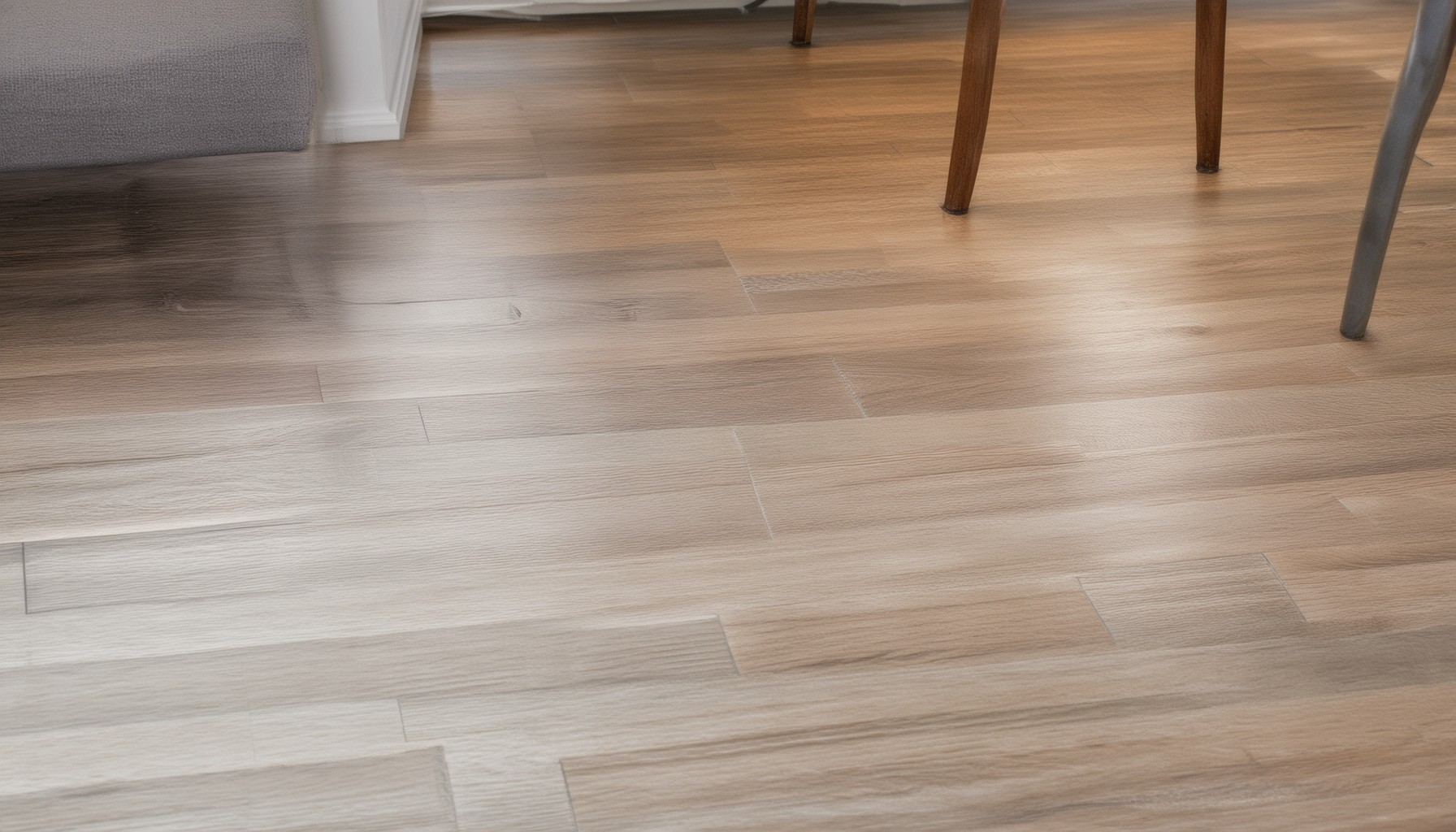



0 Comments